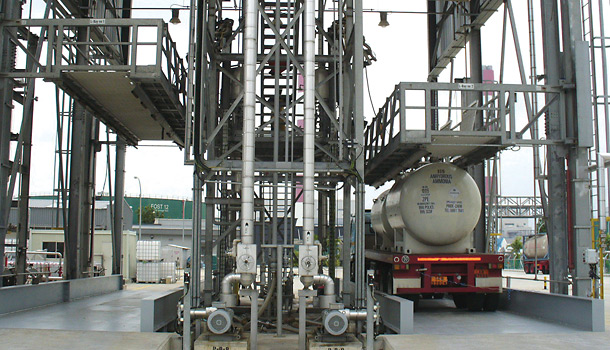 Loading and unloading goods transported by trucks, while a routine activity for many companies, presents a significant number of safety hazards, including the potential for falling employees, objects and machinery.
Loading and unloading goods transported by trucks, while a routine activity for many companies, presents a significant number of safety hazards, including the potential for falling employees, objects and machinery.
These accidents often result in serious injuries or even fatalities, and you may be held liable as the employer. That’s why it’s important to identify safety issues early on, especially if you’ve experienced close calls in the past.
In order to promote truck safety for your workers, your company should take certain expert-recommended precautions. You must choose the appropriate safety equipment, advocate proper truck spotting and implement employee training. These three best practices help you improve workplace safety at your facility.
1. Use The Appropriate Equipment For Your Specifications
Simply telling your vendor you need a loading rack does not provide them with enough information to recommend the appropriate equipment. Before you place an order for your safety solution, measure your vehicles. You must also have a thorough understanding of your loading and unloading processes.
Your safety equipment vendor needs to know the dimensions of your trucks and what your operational procedures are before they are able to design the correct fall prevention equipment for your specifications. Using the wrong equipment puts employees in danger, rather than protecting them.
2. Account For Changing Conditions When Truck Spotting
Spotting trucks correctly is perhaps the most critical component of a safe loading and unloading procedure. Despite the dangers associated with improper spotting, drivers and employees often ignore spotting instructions.
Changing conditions at your work site may prevent employees from performing proper truck spotting if instructions are not modified accordingly. Keep employees up to date on the right spotting techniques while accounting for changes in truck shapes and sizes.
3. Provide Comprehensive Employee Safety Training
Truck loading and unloading is dangerous when employees do not know how to use equipment correctly. If an employee is injured while using equipment they have not received training on, your company is at risk of a lawsuit.
You must train your employees on how to safely use all equipment necessary for their jobs. Simply having fall prevention equipment in place is not effective if your employees are unfamiliar with proper procedures for using the equipment.
Once you have refined the correct safety methods at your company, you should conduct regular equipment maintenance and safety audits. You don’t want employees to find workarounds for safety procedures, as this may result in serious accidents.
Safety solutions are only effective if you’re committed to maintaining a culture of safety at your company. Supervise your workforce to reinforce safety and encourage your employees to provide feedback, suggestions and even criticisms to help you build a safer company.
Do your workplace safety practices focus only on OSHA compliance? Discover 7 tips for shifting your approach to promote a culture of safety.



